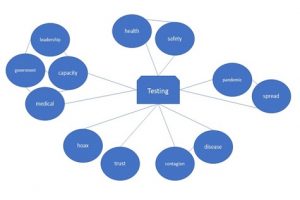21 The Writing Process
Tracy L.F. Worley, DM PMP and Ruth Robinson, class of 2022
There are five fundamental steps in the writing process:
- prewriting
- drafting
- revising
- editing
- proofreading
But what does it all mean? Any writer, whether collegiate or professional, should have an organized process so their final product is thoughtful, organized, and well-written. Review the Open Writing[1] chapters on the writing process.
The Steps in the Process
Once you select your topic, begin your research. Check some of the online research sources, including your school library, and take copious notes – that means a lot of notes! Your research should include many perspectives on the same issue. If you are writing a researched argument, you want to be aware of both sides of the issue. Now you can begin to write.
I like to call prewriting a “brain dump.” Review the Pre-Writing Strategies for generating ideas on the OpenWriting.org open educational web source.
You’ve dumped everything on the page. Now it’s time to organize your thoughts. What are the key messages you want to convey? Begin with your topic. What is it you want to say? This will inform your thesis statement — a single sentence, usually at the end of the introductory paragraph, that expresses the main point, idea, or argument of a research or expository paper. Organize your key messages from introduction of the topic to your conclusion. For example, if your topic is coronavirus testing, determine your position on testing and the point you want to make about it. The outline of what you want to write about might look like this –
- Introduction – testing should be mandated and implemented by the federal government for every citizen (thesis)
- Coronavirus: “Hoax” or Pandemic (background on virus spread, reactions of government leadership, etc.)
- Testing capacity at the state level (advantages and disadvantages)
- Conclusion (summarizes points supporting thesis and concludes why the thesis is correct)
Another strategy for visual learners is the clustering exercise. In our example of the coronavirus testing paper, the cluster map might look life this –

Now you are ready to draft your paper. Section by section, attack the topics you’ve outlined. Don’t worry about word or page count – just write. When using material from your sources, note where you got them so you can appropriately cite them in-text (within the narrative using parentheses at the end of the statement or paragraph you quoted or summarized) and in your reference list at the end of the paper.
The draft is done! All that research and thoughtfulness has paid off in an essay you can mold into your own literary masterpiece. Now, check your writing.
- Does my thesis clearly state my main point?
- Who is my audience, and will they understand the points I am trying to convey?
- What sources did I use, and have I properly attributed their work and listed them in my reference section?
After checking your paper with the checklist above, review the Revision on the OpenWriting.org open educational web source and complete the exercises your instructor assigns. After that, now you can revise!
Revising your paper entails tightening up your work, making spelling and grammatical corrections, checking your use of language and voice. Unless your paper is a commentary or a conversation, write in the 3rd person. Even your opinion can be expressed in the 3rd person by stating affirmatively what you think. For example, why did you select the organization or discourse community? Instead of saying, “I chose ABC Organization because it represents my interest in the financial field,” say, “ABC Organization is a prime example of a discourse community that student of finance would be interested in.”
Use active voice whenever possible, instead of passive voice. Why say, “ABC Organization is the selection of finance majors all over the university system for potential employment” (passive voice), when you can say, “Finance majors from all over the university system select ABC Organization for potential employment.” See the difference? Texas A&M University Writing Center explains active and passive voice in the tutorial below.
Editing is the next step in the writing process. It entails improving your revised draft by fixing spelling and grammatical errors, clarifying word use, and making sentences clearer and less cumbersome. This is also the time to ensure that your essay says precisely what you mean – it should accurately and effectively support your thesis. Review Editing on the OpenWriting.org open educational web source and complete the exercises your instructor assigns.
Then, it’s time to proofread.
Proofreading is that final look at your work to ensure you’ve caught everything that needs correcting. Check your formatting, spelling, punctuation, grammar, and sentence structure. It is only after this step that your essay be ready for submission. Review Proofreading on the OpenWriting.org open educational web source. and complete the exercises your instructor assigns.
- Hill.M. (2019, July 17). Composition 01: The Writing Process. Openwriting.org. http://openwriting.org/index.php/composition-01-the-writing-process ↵
Write (or type) everything you can think of on your topic, your opinions, and the perspectives you researched. Don’t worry about organization yet; that will come later. As you prewrite, think about the points you want to make so you can organize your paper later.
Explore all the ideas you have on a topic by grouping them according to the central topic for the paper.
The subject of the sentence is the actor, and not someone or something that is acted upon.
The subject of the sentence is someone or something that is acted upon.
